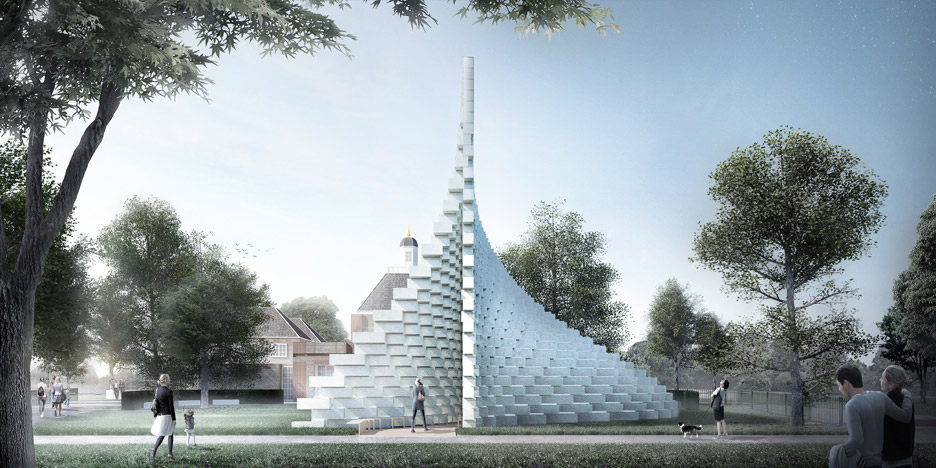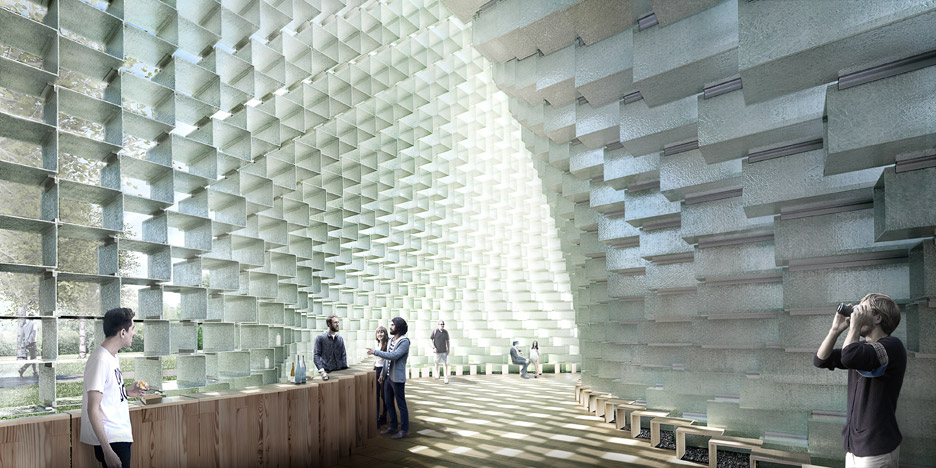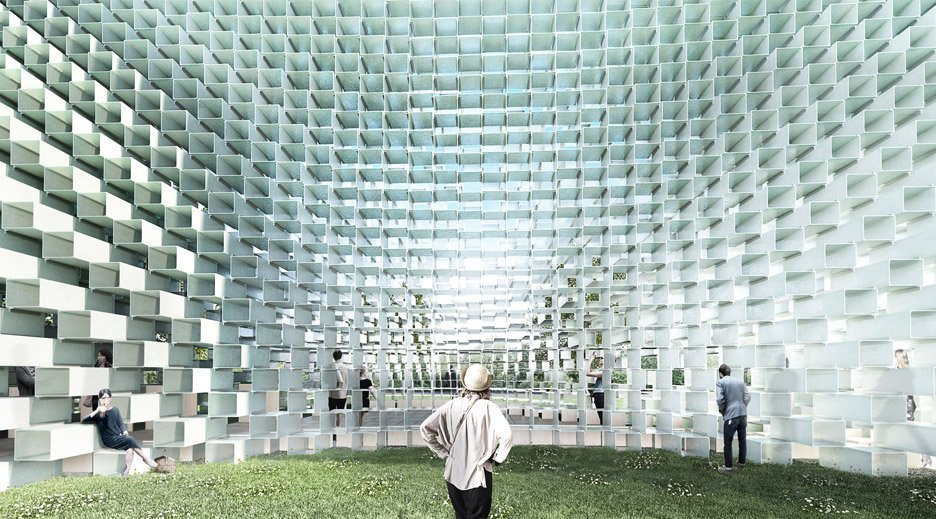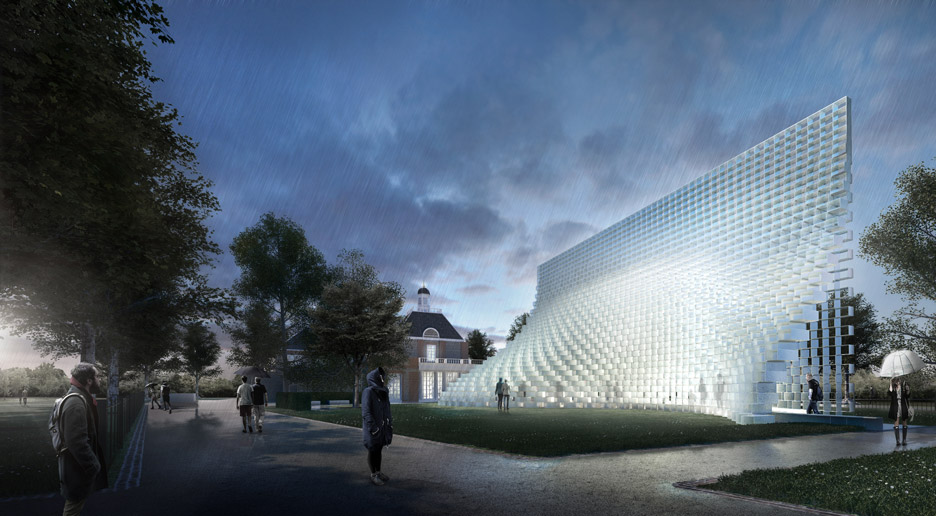Bjarke Ingels' Serpentine Gallery Pavilion conceived as an "unzipped wall"
Bjarke Ingels' firm BIG has unveiled its design for this year's Serpentine Gallery Pavilion, featuring a tall pointed structure made of interlocking fibreglass "bricks".
The Danish architect's design for this year's pavilion was imagined as solid wall that has been "unzipped" to create a three-dimensional space.
It will be made from a series of box-like fibreglass frames stacked on top of each other, in a pattern based on a common brick wall.

The wall of fibreglass blocks splits to create a curved opening to the pavilion with jagged edges.
"We have attempted to design a structure that embodies multiple aspects that are often perceived as opposites: a structure that is free-form yet rigorous, modular yet sculptural, both transparent and opaque, both solid box and blob," said Ingels.

"This unzipping of the wall turns the line into a surface, transforming the wall into a space," he added. "At the top, the wall appears like a straight line, while at the bottom, it forms a sheltered valley at the entrance of the pavilion and an undulating hillside towards the park."
The tall white structure will have a void in its centre that will host a cafe and events space during the day, and the gallery's annual Park Nights programme in the evenings.
The Serpentine commissions a different architect to create the pavilion every summer outside the Serpentine Gallery in Kensington Gardens, offering them the chance to create their first built structure in England.

For the first time, four summerhouses will accompany the main pavilion, designed by Nigerian architect Kunlé Adeyemi, Berlin studio Barkow Leibinger, Paris-based architect Yona Friedman and British architect Asif Khan.
"As you can see from the architect's renders, Bjarke Ingels has responded to the brief for a multipurpose pavilion with a supremely elegant structure that is both curvaceous wall and soaring spire, that will surely serve as a beacon – drawing visitors across Hyde Park and Kensington Gardens to visit the pavilion, the summerhouses and our major exhibitions by Alex Katz and Etel Adnan," said gallery directors Julia Peyton-Jones and Hans Ulrich Obrist.
BIG is known for forward-thinking concepts and exciting ideas, but has only a handful of completed projects, including the looping Danish National Maritime Museum in Helsingør and two new subterranean facilities for a high school outside Copenhagen.

In a recent Opinion column for Dezeen, Aaron Betsky explained why he's part of the BIG fan club.
Dezeen has been looking back at each of the Serpentine Gallery's pavilions from 2000 to 2015 in a series of interviews gallery director Julia Peyton-Jones.
Last year's pavilion was a colourful chrysalis of translucent plastic created by Spanish duo SelgasCano. Previous designers have included Peter Zumthor, Jean Nouvel, SANAA, Herzog & de Meuron and Sou Fujimoto.